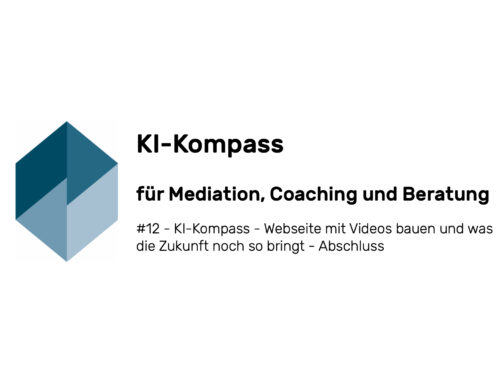INKOVEMA Podcast „Well through time“
#23 – Organisational ambidexterity.
Safety first and then a little adventure? Or why do organisations need to synchronise contradictory tasks intelligently? In conversation with Dr Gudrun Töpfer and Christoph Frey
Well through time. The podcast about mediation, conflict coaching and organisational consulting.
Dr Gudrun Töpferpsychologist and educator, and Christoph Freypsychologist, work together with colleagues in the Think Tank Ambidextry (Nuremberg), which has set itself the task of researching the ambidexterity of organisations and helping companies to structure themselves – ambidextrically and meet the challenges in this way. In this episode, you will find out what this can mean in concrete terms and why ambidexterity is currently the subject of widespread discussion.
Interesting facts about ambidexterity:
Ambidexterity in its simplest definition means the Coexistence of Exploit mode (maintaining and optimising the tried and tested) and Explore mode (pursuing innovations). The two modes are like two "operating systems" for companies that can be used simultaneously. contradict and supplement and both are absolutely critical for long-term success. The balance between the two modes results in different forms and types of ambidexterity, which have different consequences for implementation in practice.
1 What is ambidexterity?
Literally Translated means ambidexterity "Ambidexterity"the ability to write with both the left and right hand. In relation to companies, the term first appeared in the 1970s. At a time when agility and digitalisation were still a long way off, it was already being observed that companies can run in two possible "operating systems" and the effect is different in each case:
In one (it is called Exploit mode), the company runs like a well-oiled machine. Every cog is in the right place and fulfils its task, Processes run Well planned and organised off, it will optimised and improved and the end result is a good product that meets the needs of the market. The company goes into exploit mode thrifty and efficient It tries to ensure quality through control and binding rules. As the result is often predictable, the process can be controlled and the resources are easy to calculate, the exploit mode is the operating system that most companies tend to adopt over time - with the risk of becoming entangled in their own set of rules and no longer being receptive to developments in the environment (market developments, trends).
The other mode (Explore mode) What happens is what must happen when a product is no longer very popular: the company turns its focus towards InnovationIt reacts to external developments and trends, checks, tests, develops, fails, starts afresh and thus manages to place a new product on the market. The company is in this phase Rather slow, not so focussed and is also occasionally wrong.
Both modes are important for companies and neither mode can simply be neglected in good conscience – the problem is that they function contradictorily and their basic assumptions, tools and objectives are different. This makes individual balancing a field of action for companies and establishes the research area of organisational ambidexterity.
2 What forms of ambidexterity are there?
The two "operating systems" of ambidexterity (exploit mode and explore mode) are inherently contradictory: they are based on different fundamental assumptions, utilise different tools and methods and serve different objectives. How they relate to each other can look different:
- Sequential ambidexterity: A company goes through the modes one after the other. Exploration phases are followed by Exploit phases.
- Contextual ambidexterity: We talk about this when the contradiction between the Exploit and Explore modes is considered so serious that it is not possible for them to coexist. The two modes then "live" in the company, e.g. in separate departments.
- Structural ambidexterity: One can speak of this if one assumes that both modes tend to complement each other and can be integrated into each other in the work context and, for example, tasks are processed with one or the other "mode" depending on the requirement profile.
Literature on the topic:
- Tushman, M.L. / O’Reilly III, C.: Ambidextrous Organisations. Managing Evolutionary and Revolutionary Change, in: California Management Review, Vol. 38, No. 4 , p. 8-29, 1996.
- Tushman, M.L. / O’Reilly III, C.: Ambidextrous Organisations, Harvard Business Review, p. 74-82, 2004.
- Schumacher, Th. / Wimmer, R.: Shaping inconsistency. On the management of core and innovation business in the ambidextrous organisation, in: ZOE 4/2020, 10-15.





Leave A Comment